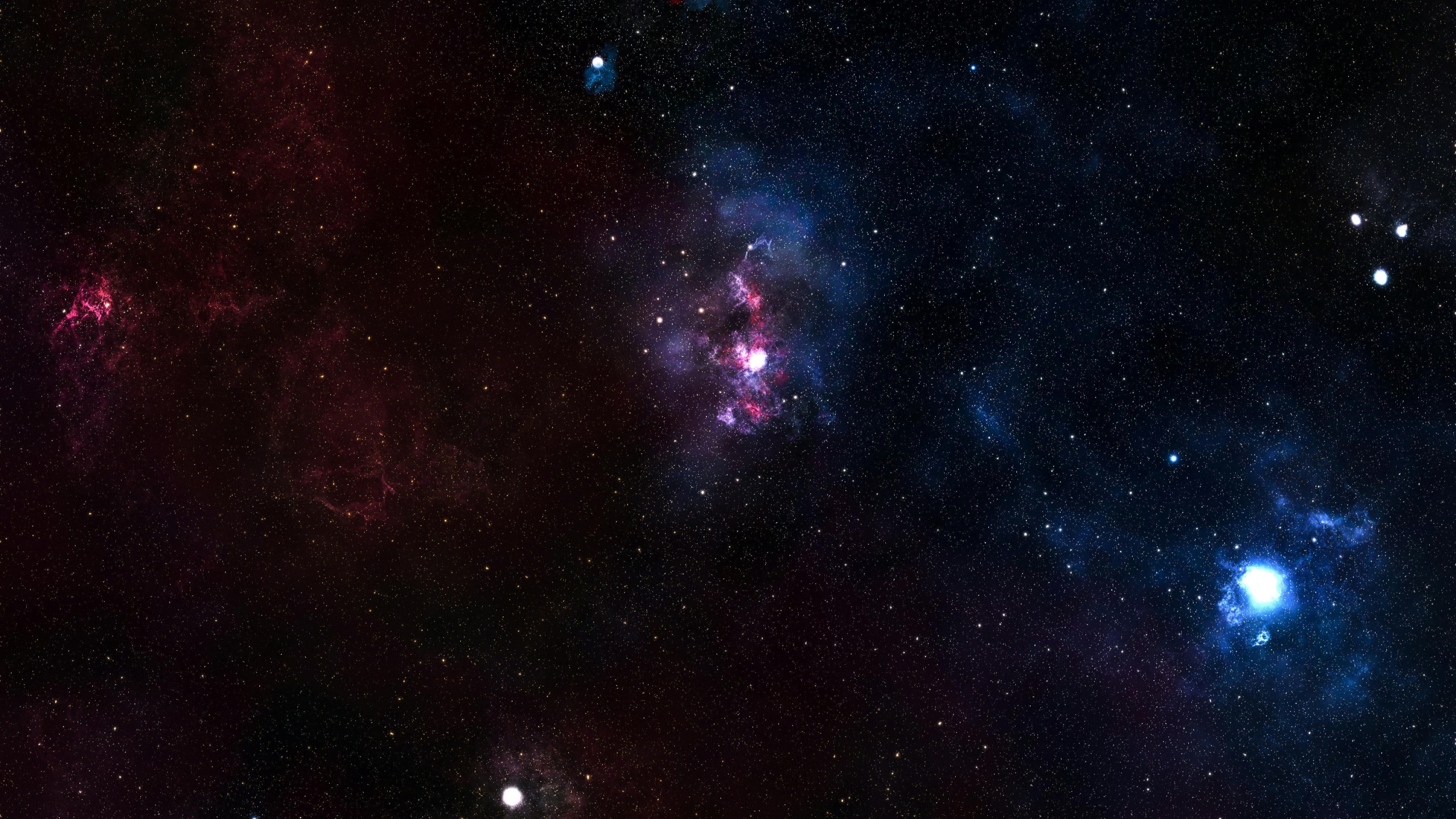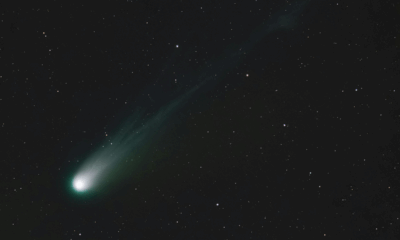Science
Astronomers Capture Stunning Images of 3I/ATLAS Comet Tonight

A rare astronomical event unfolds tonight as the interstellar comet 3I/ATLAS re-emerges from behind the Sun’s glare. This moment presents both professional and amateur astronomers with a unique opportunity to observe the comet in detail, marking the beginning of a significant observational campaign. The comet is expected to provide unprecedented insights into its behavior and characteristics.
As Earth rotates, telescopes across the globe will collaborate to create a continuous portrait of 3I/ATLAS. Astronomers anticipate that this will yield the clearest imaging yet since the comet slipped behind the Sun’s brightness. Following weeks of fragmented observations, tonight’s viewing is pivotal for understanding interstellar visitors in real time.
The Virtual Telescope Project will lead the coverage with a public livestream scheduled for 23:15 ET on November 16, 2023 (04:15 GMT on November 17). Broadcasting from Manciano, Italy, the project will utilize robotic telescopes to provide live views as 3I/ATLAS accelerates away from the Sun.
Currently, the comet rises just above the eastern horizon in the Virgo constellation, with a magnitude of +10.9, making it invisible to the naked eye. However, small amateur telescopes can still reveal a bright, softly glowing coma. Observing conditions are expected to improve over the coming nights as the comet’s geometry shifts, allowing for better visibility and more detailed measurements.
Researchers are focused on tracking several key parameters, including brightness behavior, tail morphology, thermal emission, and potential fragmentation. The stakes surrounding this observation are high. Previous interstellar visitors, such as ʻOumuamua and 2I/Borisov, posed significant questions regarding their origins and behavior. The evolving characteristics of 3I/ATLAS, particularly its tail direction and luminosity, add layers of complexity to the study.
The timeline is crucial, as 3I/ATLAS is set to make its closest approach to Earth on December 19, 2023. This provides a rare opportunity for astronomers to gather extensive data over the next few weeks. As telescopes in various regions—including Europe, North America, South America, Asia, and Australia—pass the observational baton, the data collection will become increasingly robust.
The excitement surrounding this event is palpable. Gianluca Masi, founder of the Virtual Telescope Project, noted, “3I/ATLAS has now cleared the solar glare, and we are once again able to observe it from Earth. This is the moment astronomers have been waiting for.”
As the public eagerly anticipates the results, amateur astronomers are encouraged to contribute to this collective effort. Their sharp images and meticulous observations will play a vital role in filling gaps in the data and enhancing the overall understanding of this interstellar visitor. With a sustained sequence of night-by-night imaging, the potential for one of the most extensively documented interstellar events grows ever more promising.
-

 Entertainment3 months ago
Entertainment3 months agoAnn Ming Reflects on ITV’s ‘I Fought the Law’ Drama
-

 Entertainment4 months ago
Entertainment4 months agoKate Garraway Sells £2 Million Home Amid Financial Struggles
-

 Health2 months ago
Health2 months agoKatie Price Faces New Health Concerns After Cancer Symptoms Resurface
-

 Entertainment3 months ago
Entertainment3 months agoCoronation Street’s Carl Webster Faces Trouble with New Affairs
-

 Entertainment2 months ago
Entertainment2 months agoWhere is Tinder Swindler Simon Leviev? Latest Updates Revealed
-

 Entertainment4 months ago
Entertainment4 months agoMarkiplier Addresses AI Controversy During Livestream Response
-

 Science4 weeks ago
Science4 weeks agoBrian Cox Addresses Claims of Alien Probe in 3I/ATLAS Discovery
-

 Entertainment4 months ago
Entertainment4 months agoKim Cattrall Posts Cryptic Message After HBO’s Sequel Cancellation
-

 Entertainment2 months ago
Entertainment2 months agoOlivia Attwood Opens Up About Fallout with Former Best Friend
-

 Entertainment3 months ago
Entertainment3 months agoMasterChef Faces Turmoil as Tom Kerridge Withdraws from Hosting Role
-

 Entertainment4 months ago
Entertainment4 months agoSpeculation Surrounds Home and Away as Cast Departures Mount
-

 World2 months ago
World2 months agoCole Palmer’s Mysterious Message to Kobbie Mainoo Sparks Speculation





















